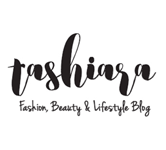Do these 2 Natural Hair Dyes Work? : Indigo powder and Henna for hair

Your last salon appointment was for a haircut, right? Or maybe a touch-up at the roots? Or did you finally get the courage to cut your bangs and dye the ends blue? Or did your mom convince you that nothing is better than indigo powder and henna for hair?
Well, whatever your last moment of indulgence was, you can’t disagree that hair is probably the most experimented part of the body. Here is a comprehensive guide on how to take care of coloured hair.
Not only do we change our hair according to whatever is trending, but whenever we get the urge to change our life, the first soldier to get martyred is HAIR!
It would have been a softer blow if the first choice was indigo powder and henna for hair, however, unless it is the most trendy highlight of brown and auburn, no one even seems to bother.
We have all dyed our hair various shades of brown and gold, and have only left it worse off than we had found it.
Here are some tests to figure out whether your henna and indigo are pure or not.
So what do natural hair dyes do differently?
The natural hair dyes that people go for are indigo powder and henna for hair.
What gives them their efficacy is the slow and time taking process of creation, each step adding more richness to the process than the last.
While Hair dyeing chemicals cater to the chain of the fast-paced hair styling and dyeing industry, natural hair colours allow for a smoother, and damage-free application that doesn’t fade out to look funky by the end of a couple of weeks.
The chemicals present in hair dyes include PPDs, PTDs, Quaternium - 15, Resorcinol, Phthalates and even SLS
These chemicals have time and again been a part of important health studies where people have reported irritation, redness and increased probability of hormonal imbalances.
Grey Hair is more Sensitive than Normal Hair
Over this damage, grey hair is sensitive and highly textured. They are more prone to damage than normal hair because they do not have melanin for protection and moisture retention any more.
The melanin factor, the pigment that gives hair its colour, decreases as we age. This can cause the hair to become thinner and weaker, making it more prone to damage from heat styling, chemical treatments, and environmental factors such as sun exposure.
In addition, the natural oils produced by the scalp may also decrease with age, which can make the hair feel drier and more brittle. This can further increase the risk of breakage and damage.
Grey Hair requires gentle care and attention to maintain its health and appearance. This includes using nourishing hair care products, avoiding harsh treatments, and protecting the hair from heat and environmental stressors.
Thus, not only should your hair care routine focus more on hydration, but if you plan to colour your hair, it should be natural stuff like Indigo and Henna Powder for hair, for maximized protection.
How are Indigo Powder and Henna for hair made?
The process for extracting henna goes this way -
For indigo, the leaves are soaked in water for several hours, then mashed or beaten to release the pigment. The mixture is then left to ferment for several hours or days, during which time it turns from green to blue as the pigment is oxidized.
Photo Credit @ freepik
And this is when the beautifully rich, deep colours from these dyes are elicited.
Can indigo be used alone?
Indigo is a dye that releases colour when it is allowed to set over time. Before that, you can use Indigo powder for hair conditioning in various hair masks.
When indigo is used alone on the hair, you are more likely to get a bluish, greenish colour, if you have allowed it to set on your hair for a longer period of time. 
Photo Credit @ freepik
To avoid this unlikely situation, you should prime your hair with henna first, so as to avoid green/blue hair.
You can even mix henna and indigo when you dye your hair, however, to cancel any of the dyes overpowering the other dye, it is advised to prime hair with henna first and then apply indigo later. 
How to get brown hair with Indigo Powder and Henna for Hair?
- Henna and indigo can be used together to achieve a range of natural hair colours, including brown. Here's how to use henna and indigo to get brown hair
- In a bowl, take the henna powder and indigo powder in a ratio of 2.5:1, and mix them with water, or hung curd.
- This means, for every 2.5 teaspoons of henna powder, you have to add one tablespoon of indigo powder. After mixing with water or hung curd, let the dye release for at least 30- 45 minutes. If you want a long-lasting colour, you can allow the dyes to set overnight.
- When the henna and indigo paste is ready for application on hair, you will see a blue film settled on top of the indigo in the mixture.
- Apply evenly on the hair, and don't forget your roots, behind the ears, and other areas.
- Rinse out the indigo and henna paste with cool water and reveal conditioned soft, silky, nourished hair.
Satthwa’s Organic Henna and Indigo Powder
Naturally made, triple-sifted and finely packaged, the Satthwa Organic Henna Powder and Indigo powder are naturally sourced and are safe for use.










Is this indigo powder the same as what is used on white clothes